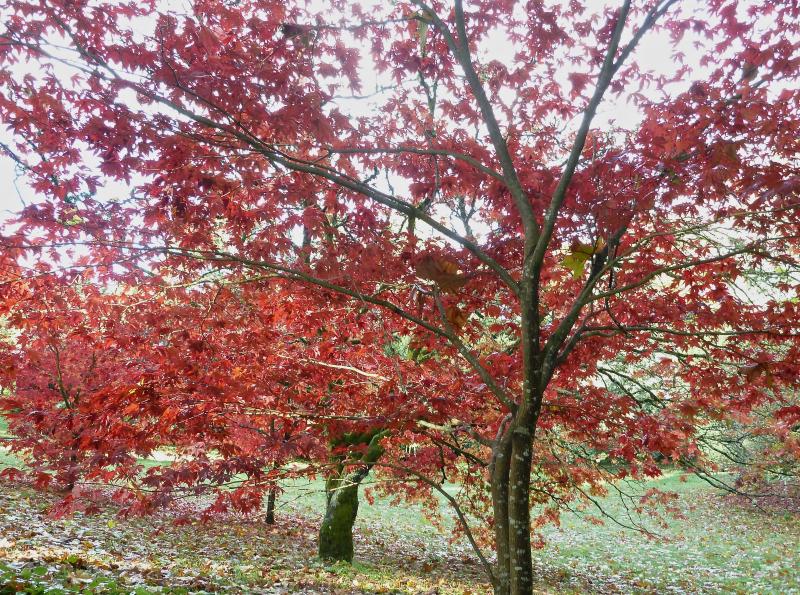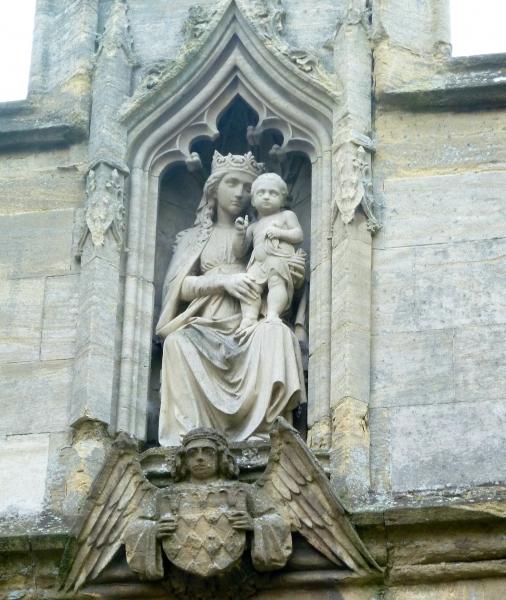
The wedding of Mr and Mrs Sodabottleoperwalla
When I was a silly 10 year old my brother I played a game of pretending to be two Parsis called Freny and Homi and we carried on dialogues in funny voices between the imaginary pair and which we thought were hilarious. I found their names exotic and so different from run of the mill Aruns, Varuns and Veenas. Their surnames were even more intriguing: Mr Sodabottleopenerwalla and Mrs Screwwalla. In school there was a Gul Kapadia and her cousin Bunny and over the road lived Amy Edulji and her brother Hoshang.
My parents had told us the story of the Good Samaritan who came to their aid on the Calais docks while they were waiting to cross the Channel in their Vauxhall, with two small children in the back chewing on a baguette because money had not been telegraphed over in time. Father looked around desperately and to his delight he saw another Indian in the car alongside (in 1950 Indians were a rare species in Europe) so asking the compatriot to roll down the window he explained his predicament. “I’ll be able to pay you in England, but can you lend me some money to get over?” I imagine Dad was sweating in his leather elbowed tweed jacket and knitted tie at asking such a huge favour from a stranger.
Mr Readymoney- for that indeed was his name- leaped out of his car. “And I am burdened with too much currency,” he cried. “You can carry it for me ” (those were the days of strict currency regulations) “and pay me at the other end. In London if you like.”
Not only did the stranger hand over the money, but his wife looking at the jam-smeared faces of the four and eight year old opened her picnic basket and gave us chocolate bars and an apple each.
Parsis, or Iranis, have been settled in India for so many centuries (since they had to run from the conquering Mongol hordes who invaded Persia in the seventh century) that not many people realize that they are actually Persian by race. Because they only rarely marry outside, they have retained their distinctive appearance- fair skinned and large nosed. Freddie Mercury was a Parsi as is Rohinton Mistry, Nina Wadia, Farrokh Dhondy, Zubin Mehta and a Sir Cowasji Jehangir Readymoney, doubtless an ancestor of our Good Samaritan. Sir Jamsetji Tata’s name (he of the steel mills of Wales) is apparently derived from “Tartar” because he had a peppery disposition.


Zoroaster, the founder of the religion

Parsi prayer meeting
Their origins are N.E. of the Caspian Sea, around 3,000 years ago where the prophet Zoroaster established the first recorded ethical monotheistic religion in history. When he was thirty he saw a vision of Ahura Mazda, the wise Lord, and was told to spread the message of Truth- to hear, see and do only what is good. His followers and he found security under the Achaeminids, then the Parthians and the Sassanians. The three Wise Men, the Magi, were possibly followers of Zoroaster and the persecuted Yazidis of northern Iraq are the remnants of a corrupted form of this ancient religion. Then there was the mind-numbing must-read Also Sprach Zarathustra, which used to have an honoured place in Pseuds Corner. This was what Nietszche said of his tome: “The whole of my Zarathustra is a dithyramb (a passionately emotional speech or piece of writing) in honour of purity. Not, thank heaven, in honour of ‘pure foolery’ (disparaging Wagner dedicating his opera Parsifal to a ‘pure fool’).
Indians have always welcomed- or at the least tolerated- outsiders and when the Mongol hordes (they were always ‘Mongol hordes’ in school history lessons, which made them sound like a great swarm of hornets) invaded and ransacked Persia, the poor Parsis, being ‘Kufrs’ fled to the coast of Gujerat. Here they soon established themselves building fire-temples and growing in prosperity.

18th century Parsi merchant in Ahmadabad

Old Parsi dwelling, Gujarat

Interior of Parsi mansion
They were westernized, had gracious table manners, wore frocks and suits and sat on upholstered chairs. The great cartoonist Mario Miranda had a lot of fun exaggerating their foibles. A wonderful exhibition in New Delhi (Indira Gandhi Memorial Museum)
A wonderful exhibition in New Delhi (Indira Gandhi Memorial Museum)
curated by the energetic Dr Sherry Cama gives a valuable, panoramic view of their ancient history and culture. I was fortunate enough to be shown around by Sherry in the company of a venerable Zoroastrian high priest from Teheran and an official of the Teheran Museum.
There are fewer and fewer Parsis in India, but they have made a magnificent contribution to modern history and culture and deserve to be celebrated.































Very nice article.
Dr. Framroz Waysideptrolstationvala…..an absolute gem.
Just a tiny error dear……it was the Arabs invasion & subsequent religious persecution, in the early 7th.century AD (that Parsis left Iran to preserve their religion) & not the Mongols (who came 6 centuries later, by which time the Parsis were frolicking on Nargol Beach drinking toddy/mowrha & gorging on Dhansak & kebabs).
Great post but one minor quibble: the Yazidis are not Zoroastrians or offshoots of them in any way. They are influenced by them but there’s a difference. They are basically an ethno-religious group who have drawn their religion from various influences such as Muslim, Zoroastrian, Christian, Jewish Gnostic, indigenous (Semitic) Mesopotamian, etc. Its a very unique, hybrid faith reflecting the diverse religious history of Iraq and the Middle East in general.
Also, it was the Arabs, not the Mongols whose invasion caused the flight of the Parsis although the exact details of how they came are pretty fuzzy aside from accounts written many centuries after the event. It most likely occurred over a few centuries and may have involved small bands of traders, implying an economic incentive for migrating, to flee the Arab domination of the sea trade which threatened their livelihood, as well as the Jizya tax and discriminatory duties imposed on them as non-Muslim businessmen. Furthermore, they were probably mostly male given the Parsi DNA indicates their mitochondrial DNA is mostly South Asian whereas its their Y-chromosome that reveals their link to Iran. Its also quite possible, many Parsis came during the 10th and early 11th centuries when Persian Muslim and Turkish Muslim dynasties took over Iran. Considering religious persecution and need to preserve the faith were cited in later chronicles, it would make sense some of them came during this period when Zoroastrianism finally gave way to Islam as the main faith of Iran. Most Persians, Arabs and Indians don’t realize this but Iran didn’t suddenly become Muslim with the Arab invasion, nor were they all forcibly converted or whatever. Aside from the elite layer that opportunistically joined the invaders and converted for social gain, Iran remained majority Zoroastrian for a good 2-3 centuries after the invasion and didn’t become majority Muslim till around the 9th or 10th centuries. It was much more gradual than people realize. The Umayyad dynasty that ruled Iran and the rest of the nascent Muslim world at the time were very much tribalistic Bedouin who favored only their own kind as Muslims and as people fit to govern the Empire, with little regard for non-Arab Muslim converts. Indeed, non-tribal Muslim converts were subjugated under a humiliating mawali (client) system where they were attached to a particular tribe, almost like an indentured servant of sorts. In many ways, it was far worse than being a dhimmi and many non-Muslims (including Zoroastrians) felt it was better to keep their faith than convert to Islam to endure such humiliation. This was actually to the liking of much of the Umayyad elite, who relied on non-Muslim taxes to buttress the Empire’s economy and treasury. In fact, some Umayyad Caliphs even actively discouraged conversion, put up heavy roadblocks to it or banned it outright. Aside from the economic incentive, a mass conversion to Islam meant the huge non-tribal population of the lands they conquered (who outnumbered them 10 to 1) would eventually claim equal power to them, thus depriving them of their privileges as members of the ruling elite. Better to keep them non-Muslim than lose all that. It was partly for this reason that the Abbasid uprising that led to the Abbasid replacement of the Umayyads took place. Although led by their Arab cousins the Abbasids, the primary generals, foot soldiers and supporters of the Abbasid takeover were non-Arab Muslims who felt disenfranchised by the Umayyads, particularly the Persians. One of the most capable Abbasid generals was a Persian named Abu Muslim Khurasani who was famous for his warfare against the Umayyads. Indeed, Persian converts to Islam were key to the Abbasid success and they became a major influence on the succeeding Abbasid Caliphate. The capital was shifted from Damascus (Umayyad) in greater Syria to Baghdad in Iraq, which was just next to the ruins of the old Sassanian Persian capital of Ctesiphon. This was itself symbolic of the new Persian influence on the Caliphate and the city itself was constructed along a similar grid pattern as Sassanian cities. Persian administrators and civil servants staffed the Abbasid bureaucracy and the most powerful family in the Abbasid government was the Barmakid family, who were originally Persian Buddhists from Afghanistan (Barmak being an Arabic corruption of the Sanskrit title “Pramukh”). Persian institutions such as the Academy of Gondishapur became the inspiration for the more well known Abbasid Bayt al-Hikma or “House of Wisdom” where the first wave of Islamic learning and scholarship took root. Persian practices and rituals were absorbed into popular Islamic culture, including veiling of women. Persian converts to Islam trained by Arab clerics became scholars of the faith and helped develop and refine Islamic law and jurisprudence. Persian grammarians like Sibawayh helped standardize the dialect we now know as Classical Arabic and helped collect pre-Islamic Arabian poetry. It was a Persian convert to Islam named Ibn al-Muqaffa who developed classical Arabic prose by translating and adapting many Middle Persian works into Arabic, including the Middle Persian translation of the Sanskrit Panchatantra, which became the famous Kalila wa Dimna – one of the masterpieces of Arabic literature. And it was in the form of Kalila wa Dimna that the Panchatantra reached Europe. Indeed, the Abbasid Empire represented the time Persians really felt they could belong to Islam and began converting en masse, free from restrictions and client status. By the 10th or 11th century, Iran became mostly Muslim and already by the 10th century (900s), the Abbasid power weakened and was replaced in greater Iran by native Persian Muslim dynasties like the Buwayhids, the Saffarids and the Samanids. It may have been around this time that the last Zoroastrian boats headed to India, as Persia became majority Muslim and Zoroastrianism became a minority faith in its own land.
Anand, thank you so much for your valuable input. You have obviously done a huge amount of research, and I obviously never did. Can you suggest a short bibliography?
Greetings to you. I am from Kazakhstan and I am from the Faculty of Arts and Literature affiliated to the Ministry of Science Academy. A conference will be held in the Faculty of Philosophy of this Academy about Ashu Zoroaster. Please, if you are ready, we can contact those who are interested in this conference. I would like to meet my fellow countrymen in India if possible.tel 7082464945
I would like to help you but I am not the right person for contacts. Perhaps Google Parsi Associations in India for more hrlp
https://www.unescoparzor.com/